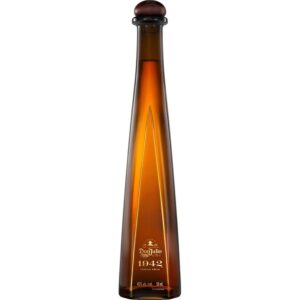The Puerto Rico flag features five alternating red and white stripes with a blue triangle and a white star. It symbolizes the island’s identity and heritage.
The Puerto Rico flag holds deep cultural and historical significance. Adopted in 1952, it represents the island’s struggle for autonomy and its unique identity. The red stripes signify the bloodshed for freedom, while the white stripes stand for victory and peace.
The blue triangle symbolizes the sky and coastal waters, and the white star represents the Commonwealth of Puerto Rico. Displayed with pride, the flag is a powerful emblem of the island’s rich history and enduring spirit. Its design reflects the resilience and unity of the Puerto Rican people, making it a cherished national symbol.
History Of The Flag
The Puerto Rico flag is a powerful symbol of pride and unity. Understanding the history of this flag offers insight into the island’s rich cultural heritage and political journey. From its creation to its modern design, every aspect of the flag tells a unique story.
Origins Of The Flag
The flag of Puerto Rico has its roots in the late 19th century. The origins of the flag are closely linked to the island’s quest for independence. In 1895, a group of Puerto Rican patriots in New York designed the flag. They drew inspiration from the Cuban flag, altering the colors to reflect their unique identity.
Key features of the original flag include:
- A blue triangle on the hoist side, representing the government.
- A white star within the blue triangle, symbolizing the Commonwealth.
- Three red stripes and two white stripes, signifying the blood and peace of the countrymen.
The flag was officially adopted on December 22, 1895, by the Puerto Rican Revolutionary Committee. This committee played a crucial role in advocating for independence from Spanish rule. The flag became a symbol of resistance and national identity.
Evolution Of The Design
Over the years, the design of the Puerto Rican flag has evolved. The initial design remained unchanged until the island became a U.S. territory in 1898. After this, the flag was banned for a brief period. In 1952, the flag was officially adopted as the national flag of the Commonwealth of Puerto Rico.
Key milestones in the flag’s evolution include:
- 1895: Original flag designed by the Puerto Rican Revolutionary Committee.
- 1898: Puerto Rico becomes a U.S. territory; flag usage is restricted.
- 1952: Puerto Rico adopts the flag as its official symbol.
The color of the blue triangle has seen changes, from a light blue to a darker navy blue. The darker blue aligns with the U.S. flag’s blue, emphasizing the island’s connection to the United States. The symbolism of the stripes and the star has remained consistent, preserving the flag’s historical essence.
Today, the Puerto Rican flag is a symbol of pride and resilience. It represents the island’s cultural heritage and its ongoing journey towards self-determination.

Credit: www.united-states-flag.com
Symbolism And Meaning
The Puerto Rico flag holds a deep significance for its people. The flag is not just a piece of fabric; it symbolizes the island’s rich history, cultural pride, and political identity. Understanding the symbolism and meaning behind the Puerto Rico flag helps us appreciate its importance even more.
Colors And Their Significance
The flag of Puerto Rico features three main colors: red, white, and blue. Each color has a special meaning that reflects the island’s identity and history:
- Red Stripes: There are three red stripes on the flag. These stripes represent the blood that nourishes the three branches of government: legislative, executive, and judiciary. They symbolize the strength and bravery of the people.
- White Stripes: Two white stripes are seen between the red ones. These stripes symbolize the rights of the people and the freedom of the individual. They stand for peace and the search for liberty.
- Blue Triangle: A blue triangle on the left side of the flag represents the sky and coastal waters. It also symbolizes the Republican government of Puerto Rico and the aspiration for a better future.
- White Star: The single white star within the blue triangle represents the Commonwealth of Puerto Rico. It stands for the island itself and the unity of its people.
Arrangement Of Symbols
The arrangement of symbols on the Puerto Rico flag is both intentional and meaningful:
- Horizontal Stripes: The five alternating red and white stripes are arranged horizontally. This layout is similar to the flag of the United States, reflecting Puerto Rico’s connection to the US as a Commonwealth.
- Blue Triangle: The blue triangle is placed on the hoist side of the flag. This strategic positioning signifies strength and stability, grounding the flag’s design.
- White Star: The white star within the blue triangle is a focal point. It is centrally located within the triangle, symbolizing unity and the guiding light for the Puerto Rican people.
Each element of the flag’s design works together to tell a story of history, identity, and hope. This careful arrangement ensures that the flag is not only visually appealing but also deeply symbolic.
Design Elements
The Puerto Rico flag is a symbol of pride and heritage. Each design element on the flag has a special meaning. Let’s explore the key design elements of the Puerto Rico flag to understand its significance.
The Lone Star
The lone star on the Puerto Rico flag is a powerful symbol. It represents the island of Puerto Rico itself. The star is white and sits within a blue triangle. This triangle is located on the left side of the flag. The blue triangle stands for the government. The white star signifies the commonwealth of Puerto Rico. The star shines brightly, symbolizing hope and freedom.
The star’s placement in the triangle shows unity. It connects the island to its government. Here are some key points about the lone star:
- Color: White
- Shape: Five-pointed star
- Position: Centered in a blue triangle
The lone star is a source of inspiration for many Puerto Ricans. It reminds them of their unique identity and strength.
Three Red Stripes
The three red stripes on the Puerto Rico flag have deep meaning. They symbolize the blood that nourishes the three branches of government. These branches are legislative, executive, and judicial. The stripes are horizontal and placed alternately with the white stripes.
Here’s what the red stripes represent:
- Legislative Branch: Makes the laws
- Executive Branch: Enforces the laws
- Judicial Branch: Interprets the laws
The red stripes also stand for the bravery and sacrifice of the people. They remind everyone of the struggles for freedom and justice. The bright red color shows the passion and energy of the Puerto Rican spirit.
Two White Stripes
The two white stripes on the Puerto Rico flag are equally important. They represent peace and victory. These stripes are horizontal and placed between the red stripes. The white stripes balance the fiery red, showing harmony and purity.
The white stripes have the following meanings:
- Peace: A desire for calm and unity
- Victory: Triumph over struggles
The white stripes also signify the people’s purity and their quest for a better future. The combination of white and red stripes creates a strong visual impact. It tells a story of courage, peace, and hope.

Credit: www.amazon.com
Controversies And Changes
The Puerto Rico flag holds deep meaning and history. It has faced controversies and changes over the years. These issues reveal the island’s complex past and political struggles. Let’s dive into the historical controversies and proposed revisions of this emblematic flag.
Historical Controversies
The Puerto Rico flag has not always been accepted. In the early 20th century, displaying the flag was illegal. The United States government banned it, considering it a symbol of rebellion. From 1898 to 1952, Puerto Ricans could not legally display their flag. This period created significant tension and opposition.
Key Historical Events:
- 1898: The U.S. takes control of Puerto Rico.
- 1932: Law 53, also known as the Gag Law, prohibits the flag.
- 1952: The ban is lifted, and the flag becomes official.
The Gag Law aimed to suppress Puerto Rican independence movements. Activists faced imprisonment for possessing or displaying the flag. Many saw this as a violation of their cultural identity. It was a dark time for those who loved their flag and what it represented.
The flag’s design itself sparked debates. Some argued over the shades of blue used in the triangle. Should it be light blue or dark blue? Different political groups supported different shades, each with its own symbolism. These color disputes added another layer to the flag’s controversial history.
Proposed Revisions
Over the years, several revisions have been proposed for the Puerto Rico flag. Some suggestions aimed to modernize the design. Others sought to make a political statement. Key proposed revisions include:
- Changing the shade of blue: From light to dark, reflecting different political affiliations.
- Adding stars or symbols: To represent the island’s municipalities or cultural elements.
- Altering the stripes: Some designs suggested more stripes or different colors.
Table of Proposed Changes:
| Proposed Change | Description |
|---|---|
| Shade of Blue | Change from light to dark blue |
| Stars or Symbols | Adding stars for municipalities |
| Number of Stripes | Increasing the number of stripes |
These proposed revisions often reflect broader political ideologies. For instance, supporters of Puerto Rican statehood might favor a darker blue, aligning with the U.S. flag. In contrast, independence advocates might prefer the original light blue, symbolizing a distinct Puerto Rican identity.
These revisions highlight the ongoing debate about Puerto Rico’s political status. Should it remain a territory, become a state, or seek independence? The flag serves as a powerful symbol in this ongoing discussion. Each proposed change carries deep meaning and reflects the island’s diverse perspectives.
Legal Status And Protocol
The Puerto Rico flag is a symbol of pride and heritage for Puerto Ricans. Understanding its legal status and protocol is essential for proper respect. This guide explains how the flag is officially recognized and the correct way to display and use it.
Official Recognition
The Puerto Rico flag was officially adopted on July 24, 1952. This date marks its acceptance as a national symbol. The flag’s design features three red stripes, two white stripes, and a blue triangle with a white star. The red symbolizes the blood of brave warriors, white stands for peace and liberty, and blue represents the sky and sea.
Here’s a brief timeline of the flag’s history:
- 1895: The flag was designed by the Puerto Rican Revolutionary Committee in New York.
- 1898: Spain ceded Puerto Rico to the United States, and the flag was banned until 1952.
- 1952: The flag was officially adopted as the national symbol.
The flag holds significant meaning for the people of Puerto Rico. It is a symbol of their struggle for freedom and their cultural identity. Puerto Ricans display the flag with great pride during national holidays and special events.
Proper Display And Use
Displaying the Puerto Rico flag correctly shows respect for its significance. The flag should never touch the ground or be used as clothing. Follow these guidelines for proper display:
- Raise the flag: It should be hoisted briskly and lowered ceremoniously.
- Display position: Place it at the same height as the U.S. flag, but to the left of it.
- Indoor display: Hang the flag vertically with the blue triangle on the top left.
- Outdoor display: Ensure the flag flies freely and does not become damaged.
When displaying multiple flags, follow these rules:
| Situation | Display Order |
|---|---|
| With U.S. flag | U.S. flag first, Puerto Rico flag to its left |
| With other flags | Arrange alphabetically by country |
Remember these points to show respect:
- Never let the flag touch the ground.
- Do not use the flag as a tablecloth.
- Do not mark or write on the flag.
Respecting the Puerto Rico flag honors its history and the people it represents.
Comparison With Other Flags
The Puerto Rico flag is a symbol of pride and history for its people. It has a unique design that makes it stand out. Let’s explore how it compares with other flags, focusing on the Cuban flag and the Texas flag. We’ll look at both differences and similarities to understand what makes the Puerto Rico flag special.
Differences From The Cuban Flag
The Puerto Rico flag and the Cuban flag look similar at first glance, but they have key differences. The most noticeable difference is the color scheme:
- Puerto Rico Flag: Blue triangle, red stripes, white star.
- Cuban Flag: Red triangle, blue stripes, white star.
These color choices represent different aspects of each country’s identity. The blue in Puerto Rico’s flag symbolizes the sky and coastal waters, while the red in Cuba’s flag represents the blood shed for independence.
Another major difference lies in the arrangement of elements:
- Puerto Rico Flag: Five horizontal stripes (three red, two white).
- Cuban Flag: Five horizontal stripes (three blue, two white).
These arrangements give each flag its unique character. The triangles also point in different directions, adding to the distinct look.
Here’s a quick comparison table:
| Feature | Puerto Rico Flag | Cuban Flag |
|---|---|---|
| Triangle Color | Blue | Red |
| Stripe Colors | Red and White | Blue and White |
| Star | White Star | White Star |
Similarities With The Texas Flag
The Puerto Rico flag also shares similarities with the Texas flag. Both flags have a single star, which symbolizes unity and independence. This star is white in both flags, positioned within a colored triangle or rectangle.
Color schemes also show some similarities:
- Puerto Rico Flag: Blue triangle, red and white stripes.
- Texas Flag: Blue vertical stripe, red and white horizontal stripes.
These colors represent freedom and bravery. While the arrangement differs, the color palette creates a visual connection between the two flags.
Here’s how they compare:
| Feature | Puerto Rico Flag | Texas Flag |
|---|---|---|
| Main Colors | Red, White, Blue | Red, White, Blue |
| Star | Single White Star | Single White Star |
| Stripes | Horizontal Stripes | Horizontal Stripes |
These visual elements create a sense of shared values between Puerto Rico and Texas, emphasizing unity and independence.
Cultural Significance
The Puerto Rico flag holds deep cultural significance for its people. Its design and colors symbolize the island’s history and pride. The flag is more than just a piece of fabric; it represents the spirit and identity of Puerto Ricans. Understanding its cultural importance helps appreciate its role in daily life and special occasions.
Use In Festivals And Events
The Puerto Rico flag is a central feature in many festivals and events. During the annual San Sebastián Street Festival, the flag waves proudly among the crowds. People dress in clothes featuring the flag’s colors. The streets are filled with red, white, and blue decorations.
Here’s how the flag is used in various events:
- Parades: The flag is carried at the front of parades, symbolizing unity.
- Concerts: Musicians often drape the flag over their instruments.
- Sports Events: Fans wave the flag to show support for their teams.
The flag also appears in smaller, everyday celebrations. At birthday parties, it can be found on cakes and decorations. During public holidays like Puerto Rico Constitution Day, homes and businesses display the flag with pride. The flag unites people during both grand and personal celebrations.
Impact On Puerto Rican Identity
The Puerto Rico flag is a powerful symbol of Puerto Rican identity. It represents the island’s rich history and culture. For many, it signifies resilience and pride. Waving the flag is a way to express love for their homeland.
The flag also plays a crucial role in the diaspora. Puerto Ricans living abroad often display the flag to stay connected to their roots. It serves as a reminder of where they come from. This connection is especially strong during Puerto Rican Day Parades in cities like New York and Chicago.
Here’s how the flag impacts identity:
- Education: Schools teach students about the flag’s history and meaning.
- Art: Artists incorporate the flag into their works, celebrating its symbolism.
- Community: The flag fosters a sense of belonging among Puerto Ricans.
The flag’s influence extends beyond the island. It shapes how Puerto Ricans see themselves and how they are seen by others. The flag is a key element in maintaining and celebrating Puerto Rican identity.
Global Recognition
The Puerto Rico flag is more than just a symbol of the island. It holds significant global recognition. This iconic flag, with its bold colors and unique design, represents Puerto Rican culture and pride. It can be seen waving in many parts of the world, celebrated by both locals and the Puerto Rican diaspora.
International Use And Representation
The Puerto Rico flag is recognized globally. Various international events and gatherings prominently feature this flag. It stands as a symbol of identity and unity for Puerto Ricans worldwide.
Sporting Events:
- In the Olympics, the flag flies high with athletes representing Puerto Rico.
- International baseball tournaments often see fans waving the Puerto Rican flag.
- Boxing matches featuring Puerto Rican fighters showcase the flag in the ring.
Cultural Festivals:
- Festivals in cities like New York and Chicago celebrate Puerto Rican heritage.
- The flag is a central feature in parades and cultural events.
Diplomatic Presence:
- The Puerto Rico flag is displayed at various embassies and consulates.
- It is part of international conferences and summits.
The flag’s design—a single white star on a blue triangle, with red and white stripes—makes it easily identifiable. This unique design helps in its global recognition and representation.
Symbol Of Puerto Rican Diaspora
For Puerto Ricans living abroad, the flag serves as a powerful symbol of home. It unites the community and keeps the spirit of Puerto Rico alive.
Community Centers:
- Many Puerto Rican community centers display the flag prominently.
- It serves as a symbol of cultural preservation and pride.
Homes and Businesses:
- Many Puerto Rican homes and businesses abroad display the flag.
- This practice shows the deep connection to their roots.
Celebrations and Holidays:
- During Puerto Rican Day Parades, the flag is omnipresent.
- Holidays like Three Kings Day see widespread use of the flag.
For the diaspora, the flag is more than just a piece of cloth. It symbolizes their heritage, culture, and identity. It is a reminder of their origins and the rich history of Puerto Rico.

Credit: www.amazon.com
Frequently Asked Questions
What Does The Puerto Rico Flag Represent?
The Puerto Rico flag symbolizes the island’s heritage and pride. The red stripes represent the bloodshed by warriors. The white stripes denote victory and peace. The blue triangle symbolizes the sky and ocean. The single white star represents the Commonwealth of Puerto Rico.
When Was The Puerto Rico Flag Adopted?
The Puerto Rico flag was officially adopted on July 25, 1952. This date marks the establishment of the Commonwealth of Puerto Rico. The flag’s design was inspired by the Cuban flag, reflecting solidarity and shared struggles for independence.
What Are The Colors Of The Puerto Rico Flag?
The Puerto Rico flag features red, white, and blue. The red symbolizes the blood of brave warriors. The white represents peace and victory. The blue triangle stands for the sky and ocean. Each color holds significant meaning tied to Puerto Rican history.
Who Designed The Puerto Rico Flag?
The Puerto Rico flag was designed by Antonio Vélez Alvarado in 1895. He was inspired by the Cuban flag. The design reflects the Puerto Rican quest for independence. It has since become a symbol of the island’s identity and pride.
Conclusion
The Puerto Rico flag stands as a symbol of pride and resilience. It reflects the island’s rich history and culture. Understanding its significance deepens our appreciation for Puerto Rico. Embrace the flag’s story and what it represents. Celebrate its beauty and the unity it brings to the people of Puerto Rico.




